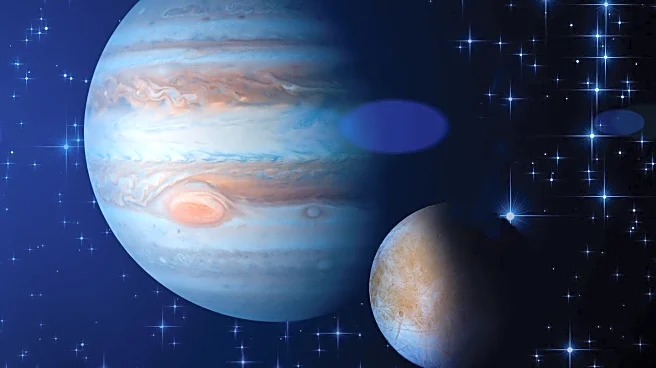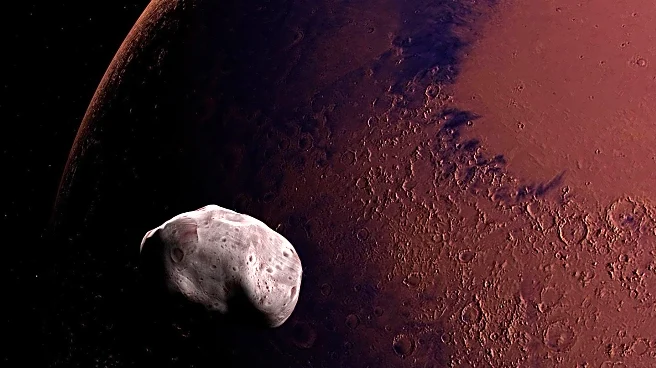What's Happening?
Skywatchers in the United States are in for a treat as Jupiter and the moon will appear close together in the night sky. On Sunday, November 9, at around 10:00 p.m. local time, observers can look towards
the east-northeast sky to see a waning gibbous moon, 72 percent illuminated, with Jupiter shining brightly below it. The distance between the moon and Jupiter will be approximately 4.5 degrees, which is about half the width of a clenched fist held at arm's length. Jupiter is currently positioned against the stars of Gemini, making it visible for a longer duration in the Northern Hemisphere. Additionally, the bright star Pollux, part of Gemini, will be visible near the moon and Jupiter, adding to the celestial display.
Why It's Important?
This astronomical event provides a unique opportunity for skywatchers and amateur astronomers to observe Jupiter, the largest planet in our solar system, alongside the moon. Such alignments are not only visually striking but also offer educational opportunities for those interested in astronomy. Observing Jupiter and its moons through a telescope can enhance understanding of planetary motion and celestial mechanics. The event is particularly significant for those in the southern U.S., where Jupiter will be near the zenith during its meridian crossing, offering optimal viewing conditions.
What's Next?
As the night progresses, the moon will continue to move eastward, altering its position relative to Jupiter and Pollux. Observers in different U.S. time zones will experience the alignment at varying times, with Eastern time zone viewers seeing it around 1:45 a.m., Central time zone at 12:25 a.m., Mountain time zone at 11:20 p.m., and Pacific time zone shortly after 10 p.m. This event marks the beginning of a period where Jupiter remains a prominent feature in the night sky, providing excellent viewing opportunities throughout the winter and into spring.
Beyond the Headlines
The conjunction of Jupiter and the moon highlights the dynamic nature of celestial movements and the importance of skywatching as a hobby that can foster interest in science and technology. It also underscores the role of amateur astronomers in contributing to the broader understanding of astronomical phenomena. Such events can inspire educational programs and community gatherings centered around astronomy, promoting scientific literacy and appreciation for the natural world.












